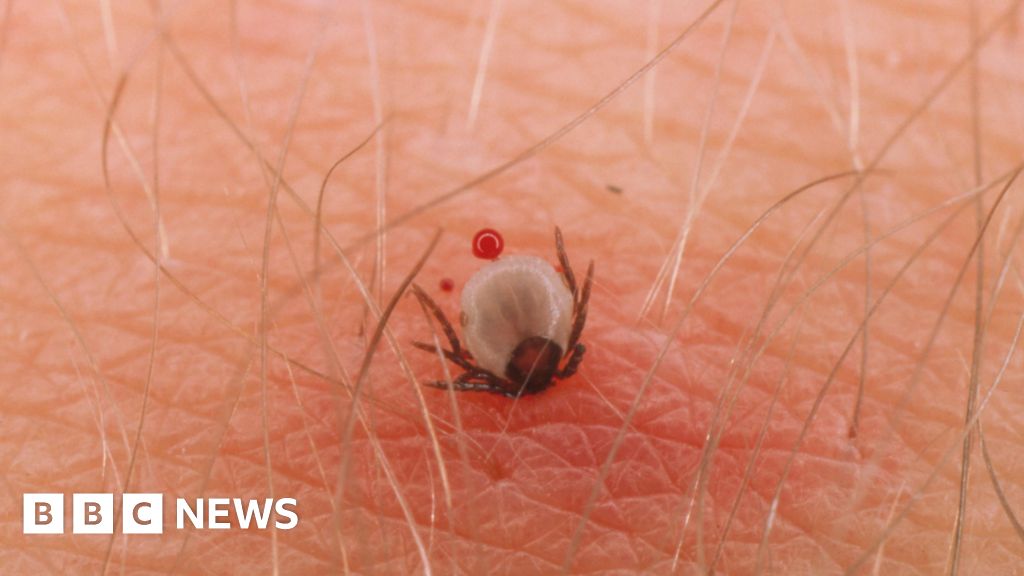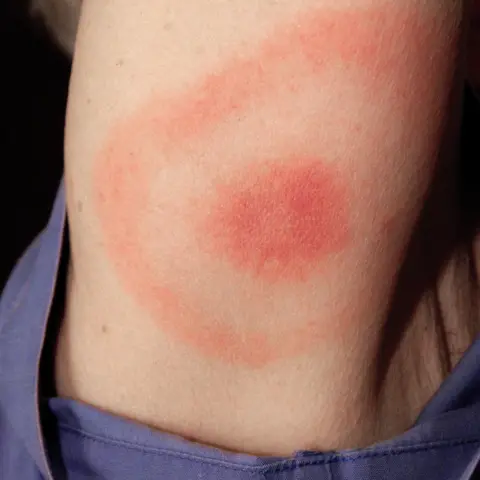World
Lyme disease increase risk in Scotland due to climate change

 Science Photo Library
Science Photo LibraryTick numbers in Scotland could almost double if temperatures rise by 4C due to climate change according to new research.
The parasites, which spread infections including Lyme disease, are likely to rise in prevalence across the country even if temperatures increase below the long-term target limit of 1.5C.
But researchers from the University of Stirling have warned a global rise in temperatures could lead to some currently tick-free habitats sustaining populations by 2080.
They said a rise in the number of people catching diseases carried by the arachnids was of “increasing concern”.
Mathematicians from the university’s faculty of natural sciences said ticks will increase in number by 99% by 2080 if the global temperature rise hits 4C, according to a paper published in the Interface journal.
A new model developed by the research team, lead by Prof Rachel Norman, found that number fell to 26% if temperatures were kept to a 1C rise.
World leaders promised in 2015 to try to limit the long-term temperature rise to 1.5C to help avoid the most damaging effects.
But Prof Norman said that would not be confined to the tick’s natural woodland habitat.
She said: “The strength of these predicted increases in tick density varied depending on the habitat.
“While woodland habitats were predicted to experience the highest absolute increases, the largest proportional increases were predicted for the slopes of mountains, known as montane habitats.
“Many of these areas that were predicted to be tick-free under recent climatic conditions were predicted to become warm enough to allow sustained tick populations by 2080.”
What is Lyme Disease?
Lyme disease has likely infected about one in 10 people across the globe, according to a British Medical Journal (BMJ) global health review.
However, there are issues with identifying and treating the bacterial infection, which can only be passed to humans by infected ticks.
The infection, which can cause facial paralysis, memory loss and heart arrythmia, is often misdiagnosed as meningitis.
A bite from an infected tick can often, but not always, create a “bullseye” rash on the recipient.
It can be treated with a course of antibiotics, but symptoms can sometimes persist for months or even years after treatment.
Blood tests are able to identify certain strains of the disease, but not all.
And not all ticks carry the disease.
 Science Photo Library
Science Photo LibrarySome of Scotland’s higher peaks will be too cold to experience the same rise in tick numbers.
It is hoped the statistical model developed by Prof Norman and her team could be adapted to predict the risk of increases in other diseases.
“While we developed the approach to predict tick densities over Scotland, it could be easily used for other areas and other vector species, and pathogens could be added to the model, enabling predictions of disease risk,” she said.
“Indeed, this methodology could be used more broadly to understand the dynamic response of populations over time to a variety of environmental changes and provides a neat new method in the modelling toolbox for researchers to choose from.”










